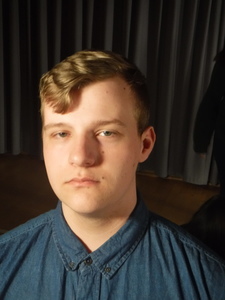13169929
biological approach to sleep, dreams, and disorders
Description
No tags specified
Mind Map by Ryan Murray, updated more than 1 year ago
More
Less

|
Created by Ryan Murray
over 6 years ago
|
|
Resource summary
biological
approach to sleep,
dreams, and
disorders
- Hypothalamas contains
the supper chrasmatic
nuclus which controls are
sleep cycle
- Chemicals control us for example melatonin makes us happy and
helps us sleep or serotonin that has various funtions like mood
regulation, appetite, digetion, sleep, memory
- Amygala controls are emotions fears etc
- Adenosine an
importint part of
making energy
through ATP
builds up
throughout the
day and sleep has
been found to
help get rid of this
extra adenosine
- Activation synthesis hypothesis Honson and McCarvey 1977
- this theory suggests that dreaming is just the brain
attemting to understand the neural activity that takes
place while sleeping
- this theory suggests that dreaming is just the brain
attemting to understand the neural activity that takes
place while sleeping
- Dement and Klentanal 1957 REM sleep
- Dreams are a larger result from random brain activity during sleep and therefore are meaningless
- Zeisler et al 1990 study of night shift workers
- Osuqld 1966 evolutionary advantage
- Sleep allows brain to carry out essentall repair tasks
- Sleep allows brain to carry out essentall repair tasks
- Oswald restoration theory 1966
- sleep has many positive affects such as:
repairing minor injuries, removal of
waste chemicals such as lactic acid,
adenosine and many more which are recycled, replenishing neurotransmitters
- theory
supported by
the high
proportain of
REM sleep
seen in new
born babies
which sleep
50/60% of the
time
- theory
supported by
the high
proportain of
REM sleep
seen in new
born babies
which sleep
50/60% of the
time
- sleep has many positive affects such as:
repairing minor injuries, removal of
waste chemicals such as lactic acid,
adenosine and many more which are recycled, replenishing neurotransmitters
- sleep is better after periods of stress and improves mood
- sleep is universal amonst complex animals
- Strenghs.
- One of the main evolutionally explanations why all
manmels sleep, growing evidence to support that sleep
is important to the brain,gives good evidence why
people with brain injery or drug withdrawl tend to
spend more time in REM during their recovery
- One of the main evolutionally explanations why all
manmels sleep, growing evidence to support that sleep
is important to the brain,gives good evidence why
people with brain injery or drug withdrawl tend to
spend more time in REM during their recovery
- weaknessess.
- oversimplistic to suggest that sleep is just about restoration and sleep deprivation
studies have failed to provide conclusive evdidence that sleep is neccessary to
keep the body funtioning Horne 1988
- oversimplistic to suggest that sleep is just about restoration and sleep deprivation
studies have failed to provide conclusive evdidence that sleep is neccessary to
keep the body funtioning Horne 1988
Want to create your own Mind Maps for free with GoConqr? Learn more.
